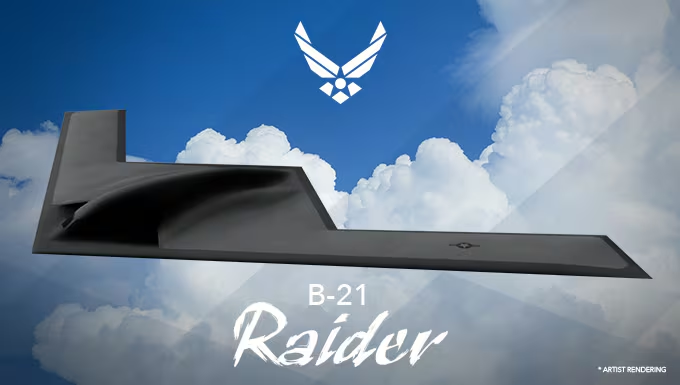The Air Force’s proposed budget for fiscal 2019 calls for increasing the number of F-35As, KC-46 tankers, MQ-9 Reapers, and rebuilding its stockpile of precision-guided munitions such as the Hellfire missile and Joint Directed Attack Munition.
The 2019 request calls for $156.3 billion for the Air Force in controlled budget authority, a $9.8 billion increase from fiscal 2018. That excludes $37.9 billion in pass-through funding.
The Air Force’s budget request aims to increase readiness and lethality to help the service “confront the reemergence of great power competition,” Maj. Gen. John Pletcher, deputy assistant secretary for budget, said in a briefing with reporters at the Pentagon Monday.
After more than 16 years of wielding virtually unopposed air power in areas such as Iraq, Afghanistan and Syria, the military is shifting its attention to countering threats and aggression from peer and near-peer nations with more advanced militaries, such as Russia, China and North Korea. And, Pletcher said, the advantages the Air Force has enjoyed until now are eroding.
“America’s military has no preordained right to victory in the air or on the battlefield,” Pletcher said.
In all, the budget calls for a slight increase in the Air Force’s total aircraft inventory, from 5,373 in 2018 to 5,426 in 2019. Flying hours would also increase, from about 1,422,959 hours in 2018 to 1,454,383 in 2019. Maj. Gen. Pletcher said that about 1.2 million of those flying hours will be for peacetime training exercises.
According to budget documents released by the Pentagon Monday, the Air Force hopes to acquire 48 F-35A fighters in 2019, two more than in 2018 and the same number as in fiscal 2017. F-35A funding would increase from $335 million to $550 million.
It will also keep KC-46A Pegasus tanker acquisitions steady at 15, the same as in the previous two years. And it also provides funding for improvements to the 4th-generation F-15 and F-16 fighters.
But MQ-9 Reaper acquisitions would increase considerably, from a total of 16 in 2018 to 29 in 2019. And with the MQ-1 Predator slated to be retired by this summer, Reaper acquisitions will become increasingly important.
The Air Force is also calling for a sizeable increase in its munitions purchases next year, to help it rebuild bomb stockpiles that have been depleted after more than a decade and a half of sustained combat operations.
The service is slated to procure 39,136 weapons in all in 2018, including 27,320 JDAMs, 3,629 AGM-114 Hellfires, and 7,312 Small Diameter Bombs. But the 2019 budget calls for acquiring a total of 48,512 weapons, including 36,000 JDAMS, 4,338 Hellfires, and 7,336 SDBs. This will bring munitions acquisition to “current industry capacity,” Pletcher said.
“We remain challenged by the pace of current operations,” Pletcher said.
And the budget seeks funding to rapidly acquire counter small unmanned aerial systems to detect, track and defeat enemy forces’ UASes, Pletcher said.
It also calls for increasing funding for the B-21 Raider bomber from $2 billion in 2018 to $2.3 billion in 2019. And as the B-21 comes online over the years, the Air Force said, it will gradually retire and phase out the older B-1 and B-2 bombers.

“If the force structure we have proposed is supported by the Congress, bases that have bombers now will have bombers in the future,” Air Force Secretary Heather Wilson said in a Monday release. “They will be B-52s and B-21s.”
And if the Air Force will continue to rely on the venerable B-52H Stratofortress ― many of which are well over a half-century old ― that will also require more improvements. The Air Force is planning to replace the B-52’s engines, which will push upgrade funding from $112 million in 2018 to $280 million in 2019.
The budget would increase funding for the new Advanced Pilot Trainer, or T-X, from $106 million in 2018 to $265 million in 2019. Funding for a new combat rescue helicopter — the Air Force is planning for an initial production of 10 — would increase from $354 million to $458 million in 2019.
Training and recruiting funding would increase slightly, from $2.1 billion in 2018 to $2.2 billion in 2019. This would allow the Air Force to expand its combat training ranges, simulators, instructors, and other key infrastructure to improve its training capabilities, Pletcher said.
Training and recruiting funding would increase slightly, from $2.1 billion in 2018 to $2.2 billion in 2019. This would allow the Air Force to expand its combat training ranges, simulators, instructors, and other key infrastructure to improve its training capabilities, Pletcher said.
Stephen Losey is the air warfare reporter for Defense News. He previously covered leadership and personnel issues at Air Force Times, and the Pentagon, special operations and air warfare at Military.com. He has traveled to the Middle East to cover U.S. Air Force operations.







